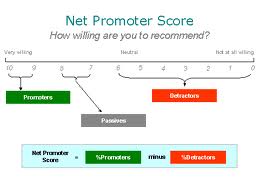My daughter has just started DP1. That is the Diploma Programme of the International School. Her tutor Mrs. Chowdhury has warned both students and teachers that time management is the biggest challenge, and social networks are the biggest threat. “That and procrastination” my daughter told me. I was going to tell her about the limited value of all these superficial friends sharing all these hardly relevant pieces of information. Mere distractions and reasons to shift focus away from serious study and school work. Apparently she was a step ahead of me.

And are we not on Facebook, LinkedIn and Twitter, too? Aren’t our most valuable assets our network, our knowledge and the intelligence we can gather about people, the companies they work for and the trends and themes affecting our markets? Aren’t we persuading our people to do what I am trying my daughter to dissuade from doing? Maybe we run the risk of procrastinating, too.
Great word… I looked it up.
The American Heritage Dictionary, for example, defines procrastination as “To put off doing something, especially out of habitual carelessness or laziness,” while Merriam-Webster Collegiate Dictionary calls it “To put off intentionally the doing of something that should be done.”
Some psychologists have suggested three criteria for a behavior to be classified as procrastination: it must be counterproductive, needless, and delaying. And while all procrastination is delay, not all delay is procrastination. It is “to voluntarily delay an intended course of action despite expecting to be worse off for the delay.”
Now I noticed a funny juxtaposition: where teenagers delay schoolwork because of relations and information, independent professionals often have the tendency to postpone networking and intelligence gathering to focus on the content and on their proposition. We see that in some of our partners. When on an assignment there is a tendency to focus on the job and to submerge in the pressure of the assignment, sometimes forgetting to actively maintain connections and share knowledge and opportunities. In between assignments productivity goes down, and although high on the to-do list, phone calls and research are postponed, or done at the last minute.
On the other hand, others – like myself – with more time for network- and research related activities run the risk of becoming addicted to meeting ever more people, to digesting more and more information in thousands of little pieces of information from RSS feeds, headlines, Twitter and LinkedIn updates and to storing and distributing contacts, opportunities and intelligence through applications like Salesforce.com and Yammer.
What makes sense, what does not, and how do we invest our time wisely?
Rolf Dobelli has written an interesting article, which was translated into Dutch and published last week by NRC-Next on how this constant stream of information affects us. In his view news (information) is to the mind what sugar is to the body: not very healthy, but difficult to resist. He calls it “small bites of trivial matter, tidbits that don’t really concern our lives and don’t require thinking. That’s why we experience almost no saturation. Unlike reading books and long, deep magazine articles (which requires thinking), we can swallow limitless quantities of news flashes, like bright-colored candies for the mind.”
According to Dobelli “At core, human beings are cavemen in suits and dresses. Our brains are optimized for our original hunter-gatherer environment where we lived in small bands of 25 to 100 individuals with limited sources of food and information. Our brains (and our bodies) now live in a world that is the opposite of what we are designed to handle. This leads to great risk and to inappropriate, outright dangerous behavior.”
There is some encouraging news in there: humans are suited for working in tribes, for thinking and Dobelli encourages us to take time to dive deep into he content. That sounds familiar: relations (a network), and content (knowledge). That sounds like us. But how do we strike a balance?
The 1970’s the management theories focused on Product Life Cycles. Companies were organized around how products were conceived, designed, tested, developed, approved, manufactured, sold and distributed to the market.
Of course customers made up the “market” and therefore in the 1980’s the focus shifted to customer-centric theories and the Customer Life Cycle.
Still, what defined the seller and the buyer was a transaction, when a product or service changed hands in return for payment. The customer life cycle provided a way for a seller to look at a buyer as not just a single transaction but as a series of “one-off” orders. Thus we moved from focusing on “getting the order” to “serving the customers needs” in the hope that the same buyer would return to the seller for more business.
However, due to the one-directional information flow, there were still some significant benefits being left on the table. The most visionary and innovative companies wanted to steal a lead in the Value Chain race and to do this the Relationship Life Cycle was developed.
The transaction thinking is replaced by interaction thinking, and instead of only measuring Return on Investment, and focusing on the bottom line, or on “What’s in it for me”, network companies like ours should focus on Return on Relationship or “What’s in it for everyone involved”. In other words, the measurement is on relationships and determining how everyone has benefited from the relationship, as well as how everyone can continue to benefit from it.
It is not easy to measure what investment is required to build a network of serious relationships. Let alone what the return is. This is abundantly clear for people who are active in the executive search business: it takes years to get to know, assess, and interact with a network of people, that at some point in time might be candidates for jobs at your client. To be able to determine who is the perfect candidate for a role in a company requires that you not only have an excellent idea and an expert opinion about someone capabilities, but also about how they would fit in the clients environment, in the longer term ambitions, in the personal situation. And then it takes a relationship build on trust to approach and convince someone to change jobs. What the clients sees is a few phone calls to someone you already knew, not what is involved in knowing. That is why we do not charge our clients based on the hours we spent, or on a percentage of the annual salary of the hired candidate, but leave it to the client. He can base the reward on the value he perceives, on how satisfied he is.
Return on Relationship is a term most often used by Ted Rubin.
Rubin makes a case for establish social networking metrics based on “conditions of satisfaction” (a concept promoted by Jeffrey Hayzlett, former CMO of Kodak and the author of The Mirror Test). In other words, what are the specific outcomes that will bring satisfaction to you, your brand, your business, and your customers? Engage, Educate, Excite, Evangelize. Evangelizing by your users is the end goal. To get there concentrate on building relationships and not numbers of viewers or visitors. Most measurements and statistics that are used with regard to relationships (such as number of Facebook fans, Twitter followers, retweets, site visits, video views, positive ratings and vibrant communities) are merely indicators that a brand is doing something that is creating value. That is only a starting point for RoR.
I cannot say we are able to measure our RoR. A metric like Net Promoter Score could give an indication on how clients look at the relation, and the satisfaction it brings to them. What we do know is that relations are not only established with clients, but – and equally important – with candidates, partners, suppliers, staff, thought leaders and others. We also know that metrics should include words like “trust”, “engage”, “authentic conversation” and “reputation” – all things that are at the heart of what a network company stands for. And possibly these things can be defined by setting up conditions of satisfaction, based on our purpose, vision and values.
So if Relationships are the new currency, and if we continuously invest in them, and want to be able to measure them, should we reward our staff and partners also on how they create value from their relationships?
 In all three areas of focus we distinguish: reputation, structure and performance relationships play a role. We used to make the interaction transactional in all here areas, by allocating to our partners (besides a large portion of their personal turnover) a percentage of turnover based on how effective they were bringing new people into the partnership (Reputation), but we recently decided to change this and now allocate only percentages (but a larger percentage than before) for commercial activities that lead to revenue (Performance).
In all three areas of focus we distinguish: reputation, structure and performance relationships play a role. We used to make the interaction transactional in all here areas, by allocating to our partners (besides a large portion of their personal turnover) a percentage of turnover based on how effective they were bringing new people into the partnership (Reputation), but we recently decided to change this and now allocate only percentages (but a larger percentage than before) for commercial activities that lead to revenue (Performance).
Instead of rewarding for RoR we decided that the knowledge and the network are assets that are so integral to who we are that we select partners on both.
Information and access are no longer scarce commodities. Attention is. On a personal level we should be careful what information we pay attention to, and then it should better be serious attention. In the network it works the same we, we can organize access to anyone, but our success will be determined by being able to decide with whom the interaction will lead to a relationship that is authentic, meaningful and beneficial for all.




 Posted by Editor
Posted by Editor 









